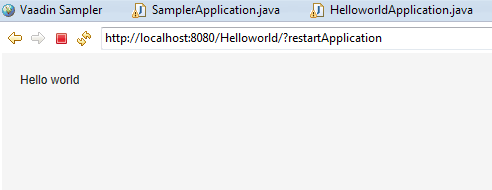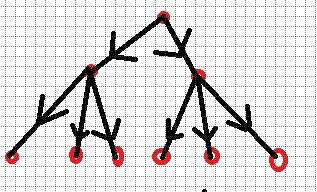Ruby on Rails 入门之:(10) Ruby中的对象
1. 类的定义与使用
1.1 类的定义
Ruby是一个完全的面向对象的语言,在Ruby中所有的一切的数据类型都是对象,然而Ruby是一种弱类型的语言,也就是说变量在使用之前不许要定义,而且不用分别变量的类型。
Ruby中类的定义如代码所示:
[ruby]
#encoding:gbk
puts "test of class in Ruby!";
class Animal
puts "i amm an animal!"
end
#encoding:gbk
puts "test of class in Ruby!";
class Animal
puts "i amm an animal!"
end
在类中的puts语句会直接输出,不像C#中的类没有作用,这里的类在运行的时候puts语句会运行。
在Ruby中要求类的第一个字符必须是大写字符,如果第一个字符不是大写字符,那么程序在运行的时候会出现错误。
如果一个类中有多个输出语句,将会按照顺序进行输出。
[ruby]
#encoding:gbk
puts "test of class in Ruby!";
class Animal
puts "i amm an animal!"
def cal
puts "calculate...";
end
puts "the second puts";
end
#encoding:gbk
puts "test of class in Ruby!";
class Animal
puts "i amm an animal!"
def cal
puts "calculate...";
end
puts "the second puts";
end
1.2 self关键字
c++中使用this关键字来表示当前对象,在Ruby中使用self表示当前对象。
[ruby]
#encoding:gbk
puts "test of class in Ruby!";
class Animal
puts "i amm an animal!"
def cal
puts "calculate...";
end
#puts "the second puts";
puts self;
puts self.class;
end
#encoding:gbk
puts "test of class in Ruby!";
class Animal
puts "i amm an animal!"
def cal
puts "calculate...";
end
#puts "the second puts";
puts self;
puts self.class;
end
输出结果为:
[html]
watkins@watkins:~/temp/workspace/ruby$ ruby class.rb
test of class in Ruby!
i amm an animal!
Animal
Class
watkins@watkins:~/temp/workspace/ruby$
watkins@watkins:~/temp/workspace/ruby$ ruby class.rb
test of class in Ruby!
i amm an animal!
Animal
Class
watkins@watkins:~/temp/workspace/ruby$
我们再看看在一个具体的对象里输出的self是什么,代码如下:
[ruby]
#encoding:gbk
puts "test of class in Ruby!";
class Animal
puts "i amm an animal!"
def cal
puts "calculate...";
end
#puts "the second puts";
puts self;
puts self.class;
def put
puts self;
puts self.class;
end
end
a = Animal.new;
a.put;
#encoding:gbk
puts "test of class in Ruby!";
class Animal
puts "i amm an animal!"
def cal
puts "calculate...";
end
#puts "the second puts";
puts self;
puts self.class;
def put
puts self;
puts self.class;
end
end
a = Animal.new;
a.put;
输出结果为:
[html]
watkins@watkins:~/temp/workspace/ruby$ ruby class.rb
test of class in Ruby!
i amm an animal!
Animal
Class
#<Animal:0xb77c272c>
Animal
watkins@watkins:~/temp/workspace/ruby$
watkins@watkins:~/temp/workspace/ruby$ ruby class.rb
test of class in Ruby!
i amm an animal!
Animal
Class
#<Animal:0xb77c272c>
Animal
watkins@watkins:~/temp/workspace/ruby$
之所以会出现这样的情况,是因为我们在类中直接使用puts语句输出self的时候,我们作用的对象是一个类,不是一个具体的对象,当我们作用于a.put的时候,我们的具体的操作的是一个具体的对象,所以会输出这个对象的地址。那么这个对象的类型也是Animal类型。这里需要特别注意。
1.3 追加类
在使用类的时候,如果有两个或多个同名的类,系统会自动的合并这几个类。
[ruby]
#encoding:gbk
puts "test of class in Ruby!";
class Animal
puts "i amm an animal!"
def cal
puts "calculate...";
end
#puts "the second puts";
puts self;
puts self.class;
def put
puts self;
puts self.class;
end
end
class Animal
def sayHello
puts "hello";
end
end
a = Animal.new;
a.put;
a.sayHello;
#encoding:gbk
puts "test of class in Ruby!";
class Animal
puts "i amm an animal!"
def cal
puts "calculate...";
end
#puts "the second puts";
puts self;
puts self.class;
def put
puts self;
puts self.class;
end
end
class Animal
def sayHello
puts "hello";
end
end
a = Animal.new;
a.put;
a.sayHello;
1.4 嵌套类
嵌套类的使用要使用::双冒号来引用里面的嵌套类。
[ruby]
#encoding:gbk
class Animal
class Head
def put
puts "this is class Head's method put";
end
end
end
h = Animal::Head.new
h.put;
#encoding:gbk
class Animal
class Head
def put
puts "this is class Head's method put";
end
&nb
补充:Web开发 , 其他 ,




